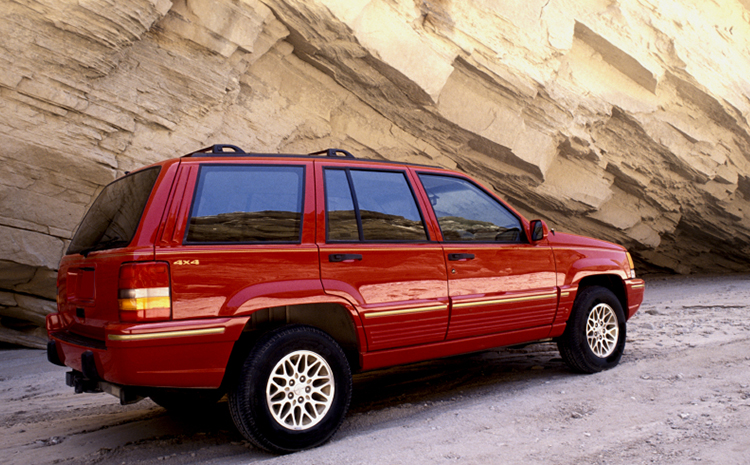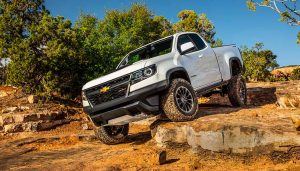
Check your fluids before taking an off road adventure
How To Prepare for Your First Off Road Adventure
For many drivers of 4×4 SUVs and pickup trucks, the attraction to the vehicle is the aggressive styling and the “tall ride” that extra clearance provides. There is also something reassuring about knowing, or at least imagining, being able to leave the road and cut across country if you want to.
However, for most 4×4 drivers the only “off roading” they will ever do is when they pull off the street onto the gravel parking lot of a Christmas tree stand or their kid’s soccer field. Even when their ride is tricked out with wide tires and fog light racks off roading typically means having to park at the far end of a big box store parking lot.
They love the look, they love the idea, they like the safety that big vehicles provide but climbing rocks, sliding through mud, trekking on trails with no AAA available…not so much.
Offroading for Offroading Newbies
Then there are the adventurers like you. Why invest in a big honking SUV or truck if all you are going to do is tick off people by taking up 1 ½ parking spots every time you park? What you want to do is exercise that unique drive train on some terrain that will test your skill.
What follows are some smart tips on how to prepare for your first (or fiftieth) off road adventure and how to find that perfect piece of terrain near you.
Before you head out:
- Know your vehicle. Know how to engage the 4×4 drive, what your vehicles dimensions are, where the jack is, where the computer and engine air intake are so you can determine how deep a puddle or stream you can cross, and lastly get a feel for the driving characteristics while in 4×4 mode.
- Check all of your fluids and tire pressure.
- Take your cell phone. Having communication with the outside world can literally be a life saver. If your 4×4 is not equipped to charge your phone make getting an adapter your first modification to the vehicle.
- Take a friend, ideally one who is experienced in offroading. Never head out solo.
- Make sure your battery is securely attached to the mounting. The rocking and bumping associated with offroading can cause the battery to disconnect from the cables if it is not battened down tightly.
- Pack emergency supplies including a tow chain or rope, water, shovel, and duct tape, oil and coolant, food for 48 hours longer than you plan, rain gear, emergency blanket, lantern and a basic auto tool kit.
- Always tell someone where you are going and when you expect to return home.
- Bring along a trash bag or other container to collect your wrappers, bottles, cups etc. Don’t ruin the experience for others by littering.
- When you load your vehicle, keep in mind that gear placed behind the rear axle will sag the rear of the vehicle, limiting your departure angle and clearance. If you have a roof rack filled with gear you may have changed the center of gravity making the vehicle less stable.
Now that you are ready, let’s find a place to go.
How to Find the Perfect Offroad Playground
First let’s talk about where you don’t want to go…ever. You don’t want to tear across an inviting parcel of land, private or public, without permission. Not only is it rude and inconsiderate, but it could result in a hefty fine for trespassing and a bill for any damages done by your vehicle.
Where you go and what type of offroading you do will depend largely on where you live.
Dune bashing, attacking a tall sand dune, obviously requires having a dune available. Consequently you’ll be limited primarily to desert areas. Mudding, or seeing how far you can go through mud or wet clay, is a popular activity but it is almost exclusively confined to private property as it is illegal on public lands. Rock crawling is for the hardcore enthusiast because it involves significant alteration to the vehicles suspension and undercarriage.
Probably the best first time experience is simple “green laning” or “two-tracking.” This involves getting off the beaten path but still staying on a path of sorts. If you are fortunate enough to live near a national forest you can usually offroad on their fire trails. In larger parks they even offer maps. This experience gives you an opportunity to drive on different surfaces and get a feel for how your ride handles off a paved road.
Usually people who are new to offroading already have an idea where to go because they have shared the experience with a seasoned off roader. If however you are clueless…
Ask for Opinions
Probably the best way to find offroading trails near you is to locate an off road club near your home. Almost every community has one
Frequently these clubs are organized around specific brands so you will be among drivers with offroad experience driving a vehicle similar to yours. These clubs already know where the trails are and what degrees of difficulty each represents. They are usually a friendly bunch and happy to share their info with another driver with the same kind of ride.
A bonus of belonging to a club is the opportunity to go on their outings which means you are travelling in a convoy of experienced drivers.
Another resource is the nearest Off Road Vehicle Park (ORV). These are pay for use parks for all types of off road vehicles including buggies, ATVs and motorcycles. They all will have beginner trails that you can start out on.
Just remember this; offroading requires a new skill set. The more time you have on the trail the more confidence you’ll develop in your capabilities. When you know what you are doing behind the wheel the “thrill factor” goes up exponentially and you’ll be hooked.
Don’t drive recklessly but have fun and enjoy the sport!





